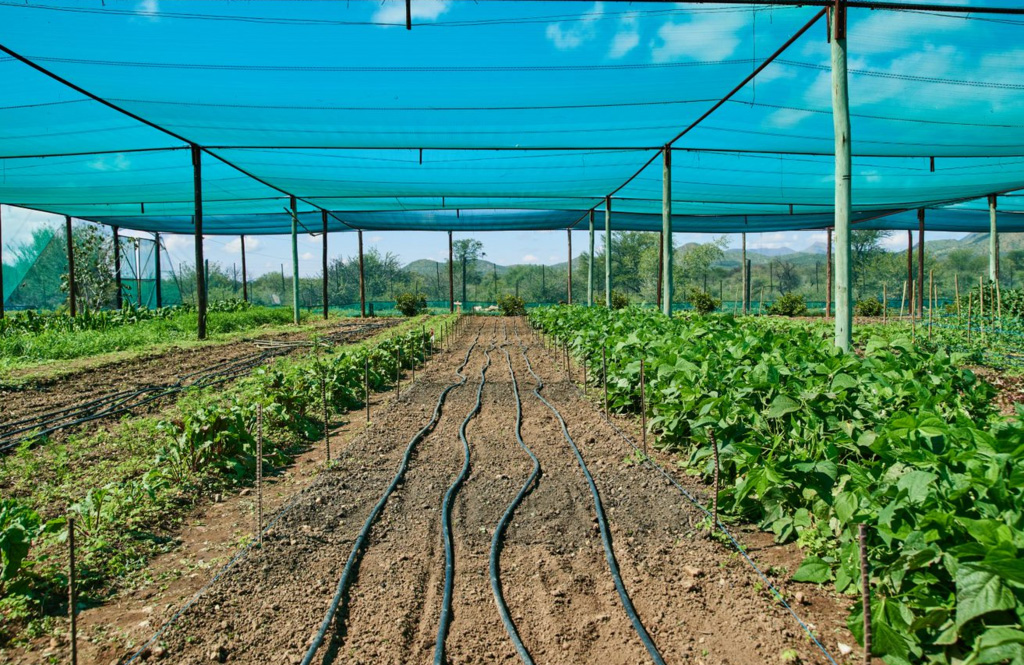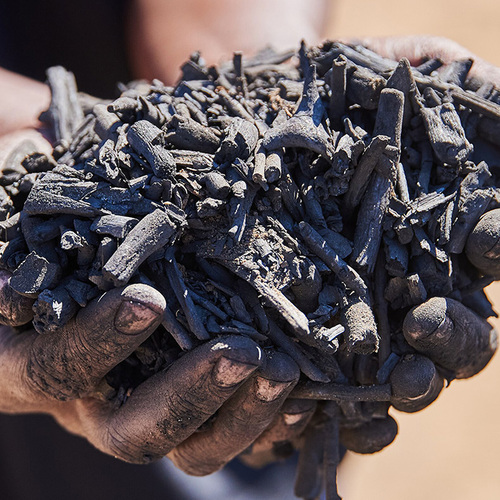While biochar is by no means new, it is relatively new to the world of horticulture as a mainstream soil amendment. But what is it exactly? Biochar is a substance that is created by burning organic material in an oxygen-deprived environment. This results in a highly stable form of carbon. Scientists call it “recalcitrant carbon” because it can remain in soil for decades, perhaps even millennia.
The long history of biochar as a soil amendment
Biochar has been used by indigenous peoples in the Amazon basin for at least 2,000 years. Sites that have historically been treated this way contain highly fertile soils called terra preta that have elevated levels of carbon, thanks to the stable biochar in the soils. Amazonian farmers developed these terra preta soils by incorporating charcoal with pottery shards and organic matter, and these soils remain fertile to this day.
The value of biochar for modern agriculture was first recognized by the Dutch soil scientist Wim Sombroek in the 1950s. He observed highly fertile soils in the Amazon near less productive acidic soils and began a lifetime of studies dedicated to understanding the cause of increased fertility in terra preta soils.
How biochar is made and where to buy it
Modern biochar is created by burning organic materials at 350°C (662°F) to 700°C (1292°F) in a low-oxygen environment. This can be done in a highly technical way using a pyrolysis reactor, or by a home gardener who has constructed a biochar kiln.
Another method is to stack organic materials ranging in size from 1 to 10 inches thick and then set them on fire starting from the top. This creates a low-oxygen environment, which slowly transforms the organic materials into biochar over the course of hours depending on the size of the piles. It is critical to quench the coals with water or rake them out before they turn to ash. One example of this method can be found in forest management. Forest undergrowth cleared to reduce forest fire risk is a promising organic material source for biochar, which can then be reapplied to marginal forest soils.
While this is how biochar is made, it is readily available at many garden centers, nurseries, and agricultural supply stores for purchase in different quantities.
What does biochar actually do to soil?
When applied to soils, biochar can provide many soil health benefits. These include:
- improving water availability and drainage
- providing habitat for soil microbes
- increasing nutrient availability in the soil
- increasing the soil’s ability to retain certain nutrients, otherwise known as its cation exchange capacity, or CEC
- sequestering carbon
It also has potential for remediating polluted soils because it can bind heavy metals from interacting with plants and soil organisms.
Materials that can be used to make biochar
Organic source materials for biochar production range from vineyard cuttings (i.e., vines removed during the pruning process), manure, food waste, and crop residues. The material used to create biochar greatly influences its properties, most notably the nutrient content of the source material. Manure, for example, produces biochar with higher phosphorus than that created using wood chips.
If you are planning to try biochar in your garden, it is important to “charge” or “activate” the biochar prior to use. Uncharged or inactivated biochar absorbs nutrients, potentially binding them up and making them unavailable to your plants.
How to activate biochar
Fortunately, it is relatively easy to activate biochar. One of the most effective ways is to mix it with compost, add enough water for it to be moist, and let it stand for 7 to 21 days prior to applying it to your soil. You can then incorporate the mix directly into your garden.
Other methods of activating biochar include mixing it with manure, compost tea, or even liquid fertilizer. Most commercially available sources of biochar are already activated. It is worth confirming this with the manufacturer prior to purchase.

How to add biochar to your soil
There are multiple recommended methods for incorporating biochar into soil or potting mixes, including topdressing, adding it to the planting hole, and adding it to the soil before tillage. Spring applications are usually recommended, but fall is fine, assuming you plant a cover crop or take other precautions to reduce erosion or nutrient runoff.
How much biochar you should add to your soil
The recommended volume of biochar to add as an amendment is significant, with recommended rates ranging from 5% to 20% by volume. So it is most feasible to use biochar in container plantings, to get trees off to a good start, in small-scale gardens, and in landscaping. It is an amendment that generally is not applied repeatedly but valued more for its long-term effects, making it a great option for perennial systems including vineyards and orchards.
Which soils benefit the most from biochar, and which do not?
Biochar is not equally beneficial for all soils or all cropping systems. It is best used on lower quality soils, soils with compaction and drainage issues, sandy soils, and those with a low pH (acidic). It has been used in place of lime to correct soil acidity. In contrast, soils naturally high in organic matter, those with a high pH or CEC, and clay soils will likely show far less improvement from biochar.
Due to the cost of biochar as an amendment, it is not feasible for most large-scale farming operations, but it is worth trying for home gardens and container plantings, and for getting perennials off to a good start. Biochar is not a replacement for other sources of carbon, but when used alongside more traditional soil amendments like regular applications of compost, it can be a useful and sustainable addition to a garden soil management plan.
To discuss this article or ask other gardening questions, head over to the Gardening Answers forum. For more Southeast regional reports, click here.
Kirsten Kurtz received her master of science degree from Cornell University and is now the assistant director of the Cornell Soil Health Laboratory.
Fine Gardening Recommended Products

Chapin International 10509 Upside-Down Trigger Sprayer
Fine Gardening receives a commission for items purchased through links on this site, including Amazon Associates and other affiliate advertising programs.
CLEAN & DISINFECT: made to handle disinfectants and mild bleach solutions. DESIGNED TO CLEAN: adjustable nozzle for fine to coarse spray. 32-OUNCE TANK: translucent, chemical-resistant poly. COMFORT: ergonomic handle and sprays upside down to reach awkward areas.

Razor-Back Potato/Refuse Hook
Fine Gardening receives a commission for items purchased through links on this site, including Amazon Associates and other affiliate advertising programs.

